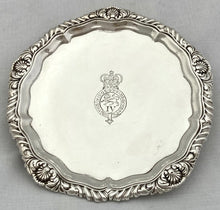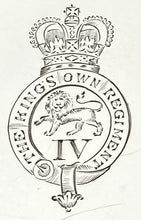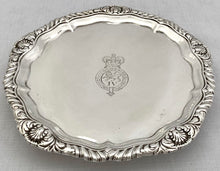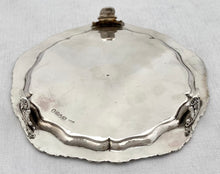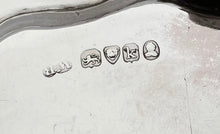
George IV Silver Waiter with cypher for 4th (The King’s Own) Regiment of Foot.
The Regiment was raised in 1680 for the defence of Tangier. In 1685 they fought at the battle of Sedgmoor and in 1690 at the Battle of the Boyne, where King William III gave the Regiment the lion badge as their emblem. In 1715 King George I bestowed the title King's Own on the Regiment. The Regiment fought in the Jacobite Rebellion of 1745 and the Battle of Culloden in 1746, where they were heavily engaged in fighting.
In 1751, its official title changed to the 4th (The King’s Own) Regiment of Foot, recognising its status as the fourth oldest line infantry regiment in the British Army.
They were engaged in the War of American Independence from 1775 until 1778. From 1810 until 1814 the Regiment fought in the many battles of the Peninsular War, fighting Napoleon's Grande Armee. At the Battle of Waterloo in 1815, the Regiment were kept in reserve, but at 6 pm on June 18th were brought to the front. They lost 12 men with a further 122 wounded. At the time this waiter was made the Regiment were coming towards the end of their posting to the West Indies.
In 1881 the Regiment became The King’s Own (Royal Lancaster Regiment), in recognition of its move to a new depot in Lancaster in 1873.
At the outbreak of the First World War (1914-18), the 1st Battalion was sent to France with the British Expeditionary Force. It remained on the Western Front throughout. The 2nd Battalion joined it there for 11 months in 1915, before moving on to Salonika.
The regiment’s title changed for a final time in 1921, becoming The King’s Own Royal Regiment (Lancaster).
During World War Two the Regimen fought mainly in North Africa, Italy, Burma and the Middle East
In good condition with high surface wear to the main surface commensurate with age.
Approximate weight is 331 grams or 10.6 troy ounces.
Approximate dimensions are 19 cm diameter and 3 cm height.






